Abstract
1. The blood-bathed organ technique was used to assay the concentration of angiotensin in the blood of anaesthetized dogs.
2. Alterations of blood volume caused inverse changes of angiotensin concentration owing to changes in the rate of generation of angiotensin which are probably due to changes of the rate of renin secretion.
3. Haemorrhage of 14-26 ml. blood/kg caused an increase of 0·25-1·5 μg/min in the rate of generation and an increase of 0·1-0·33 ng/ml. in the blood concentration of angiotensin.
4. The changes of angiotensin generation rate were not due to changes of renal arterial or venous pressure. They were abolished by blocking the renal nerves with lignocaine; they showed a consistent inverse correlation with central venous pressure but not with systemic arterial pressure.
5. It is concluded that changes of blood volume bring about changes of the rate of generation of angiotensin by a reflex mechanism the efferent limb of which involves the renal nerves. The afferent pathway remains to be elucidated, but the systemic baroceptors do not appear to be of primary importance.
6. The renin-angiotensin system is important in the homeostatic response to changes of blood volume.
Full text
PDF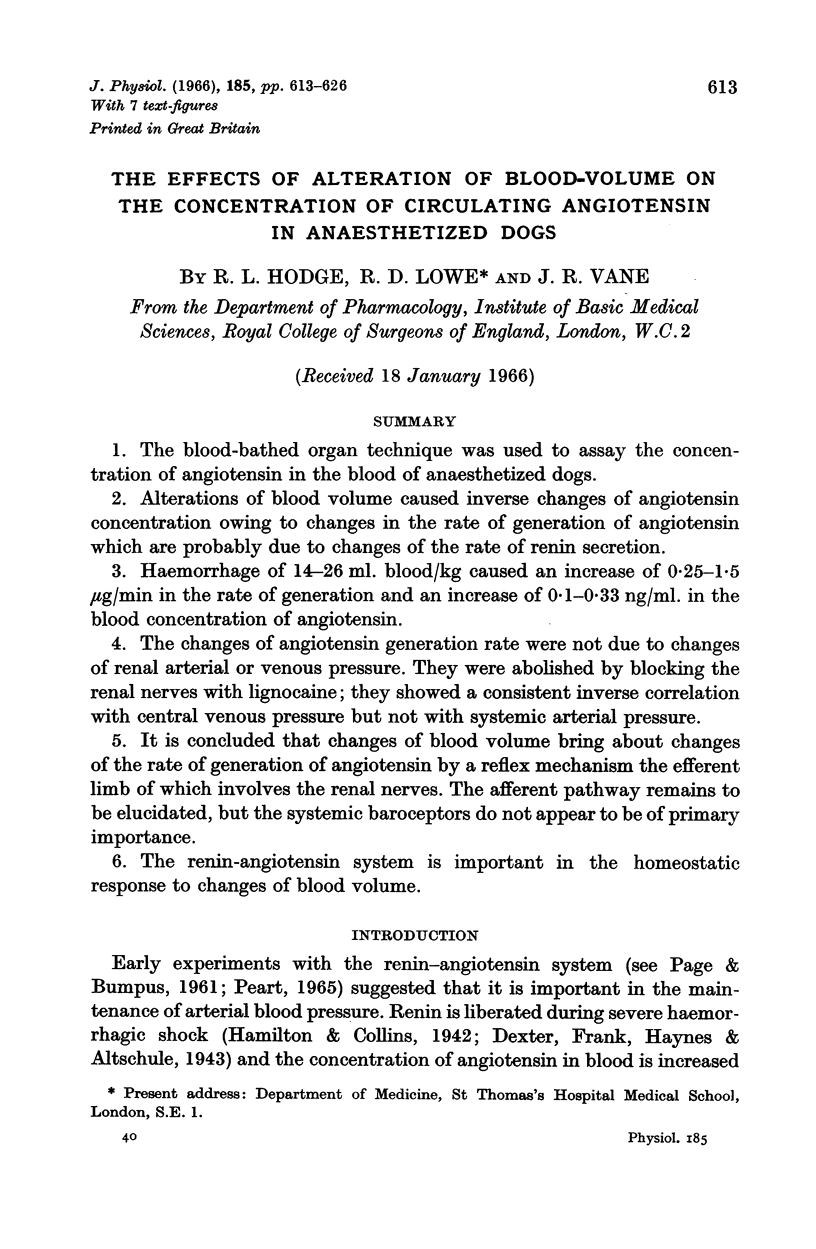
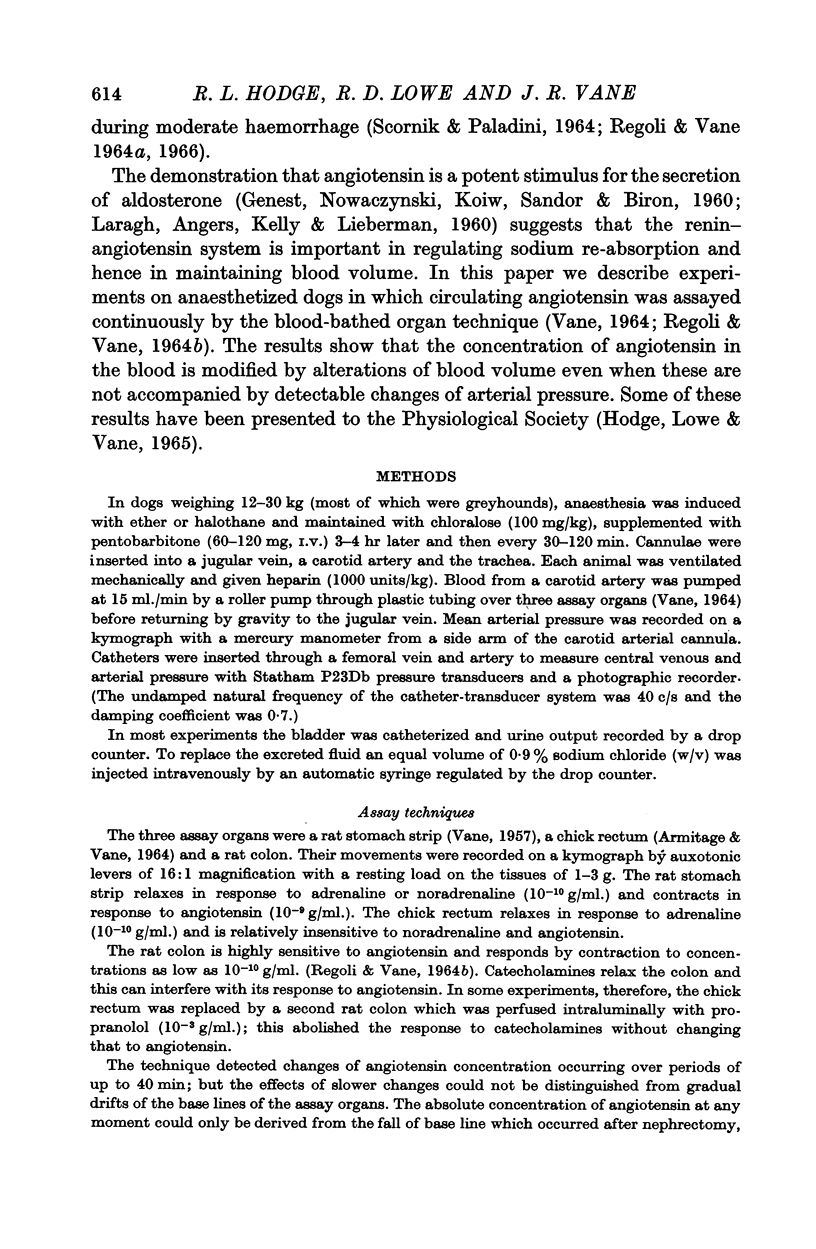
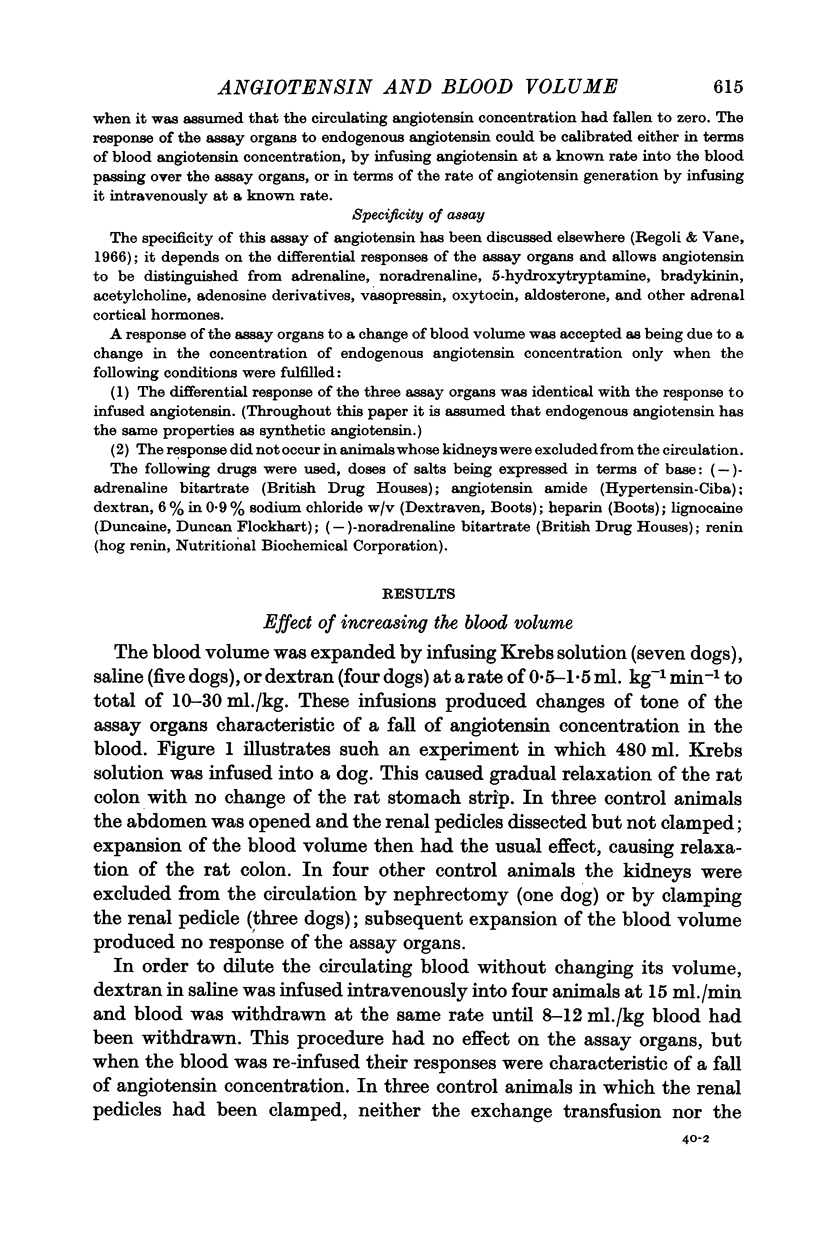
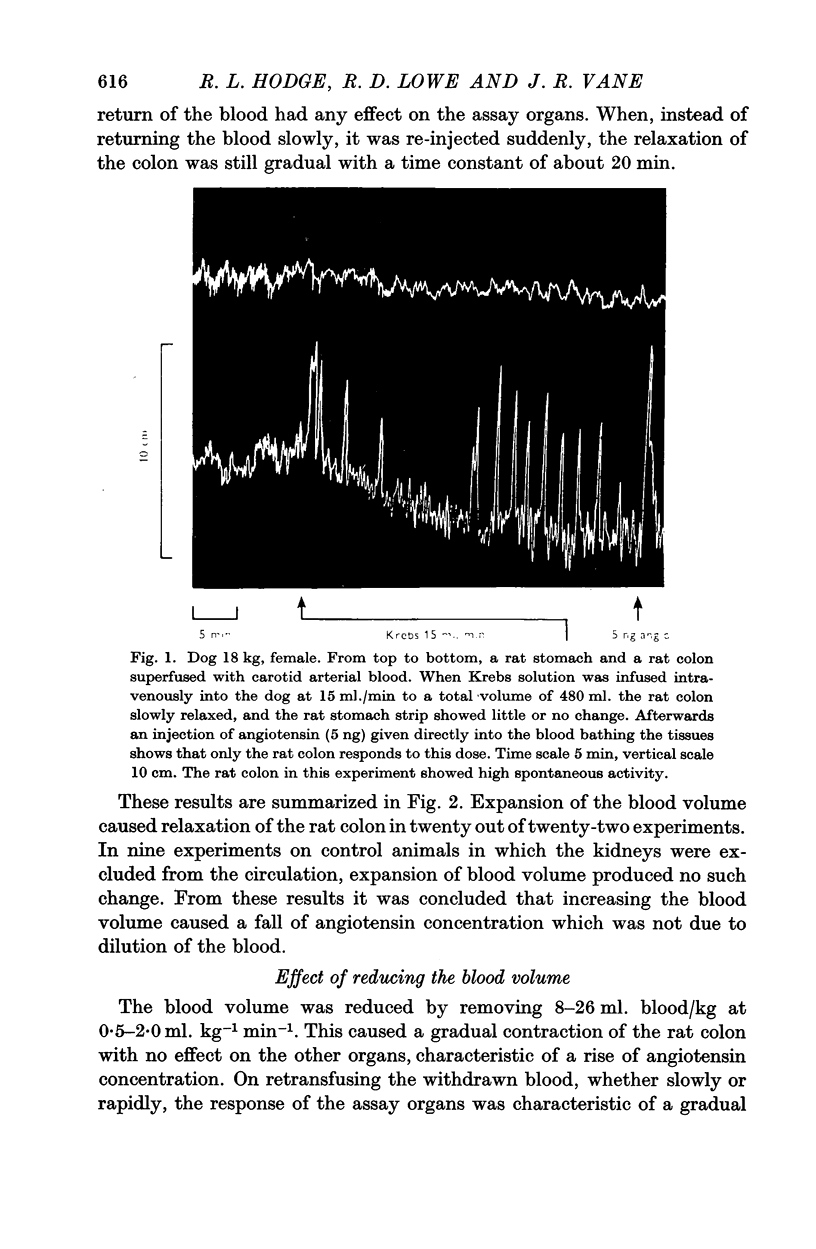
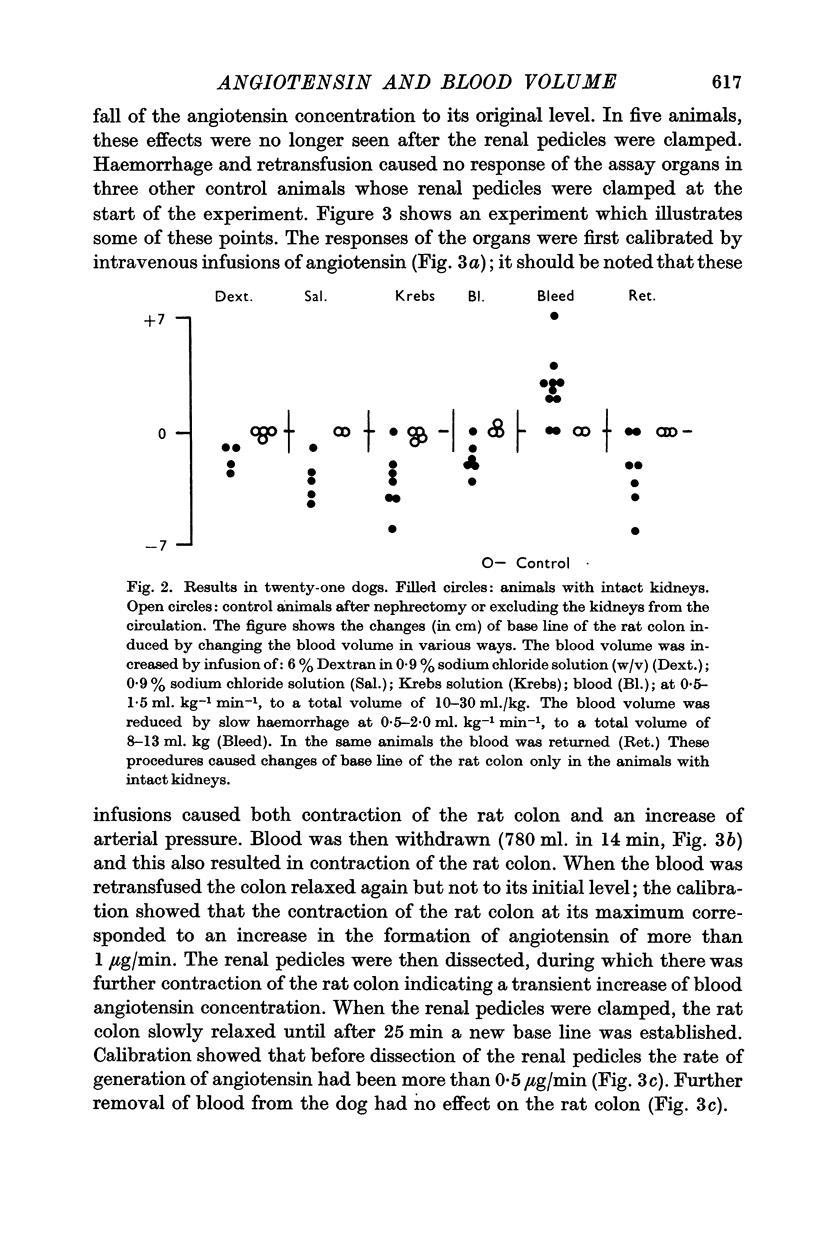
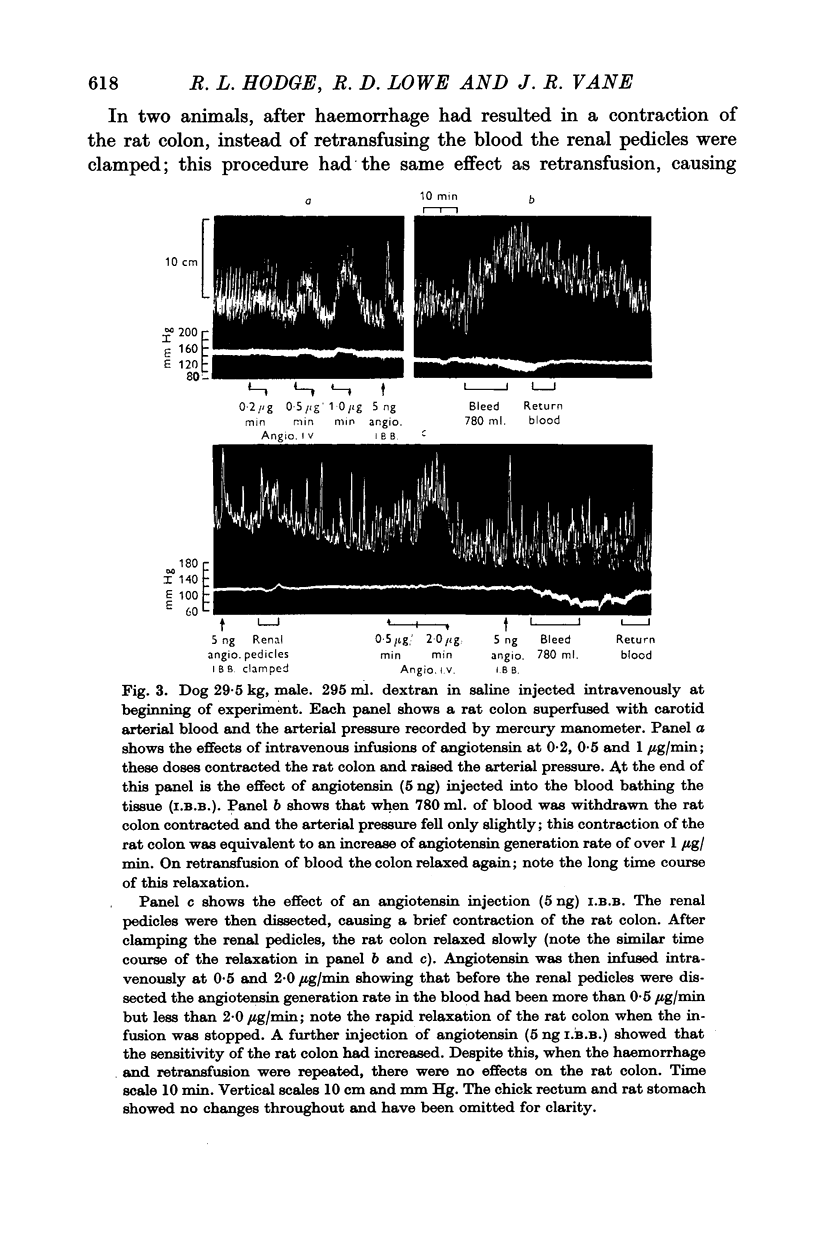
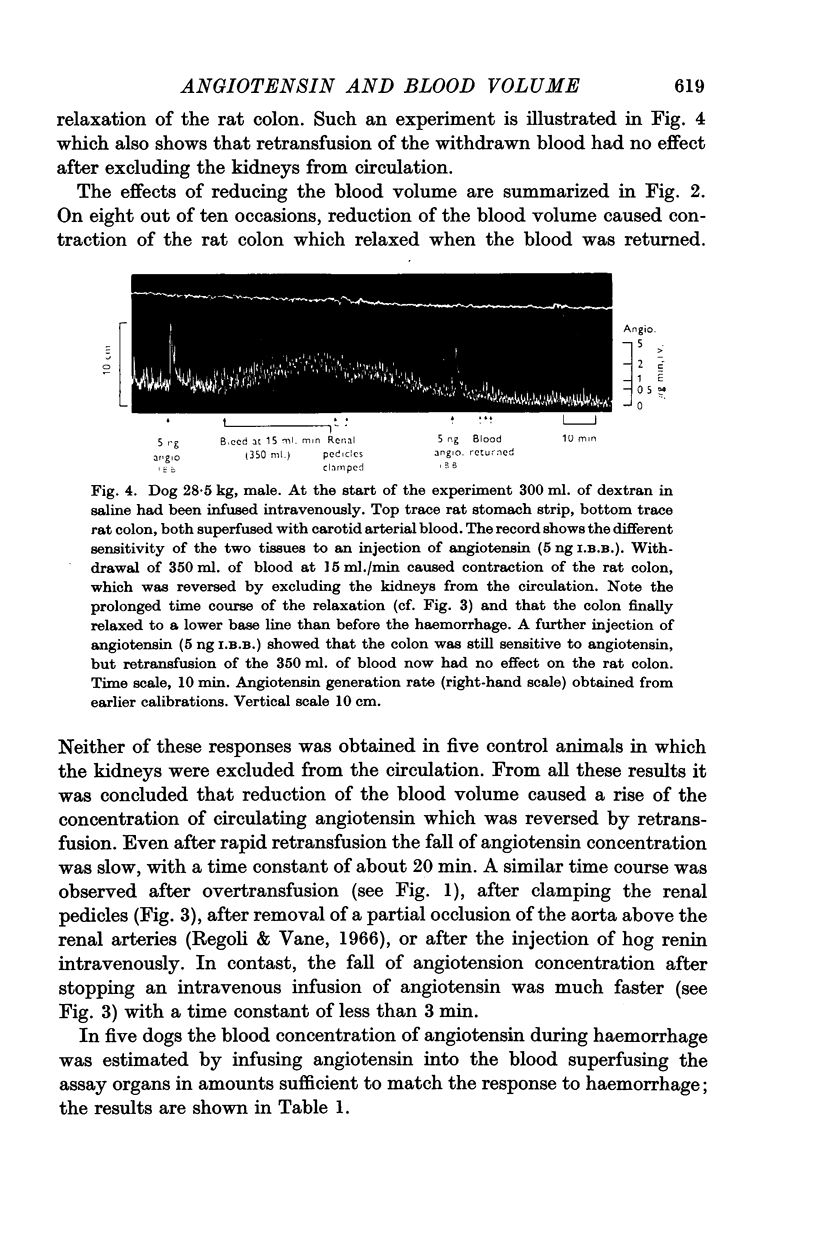
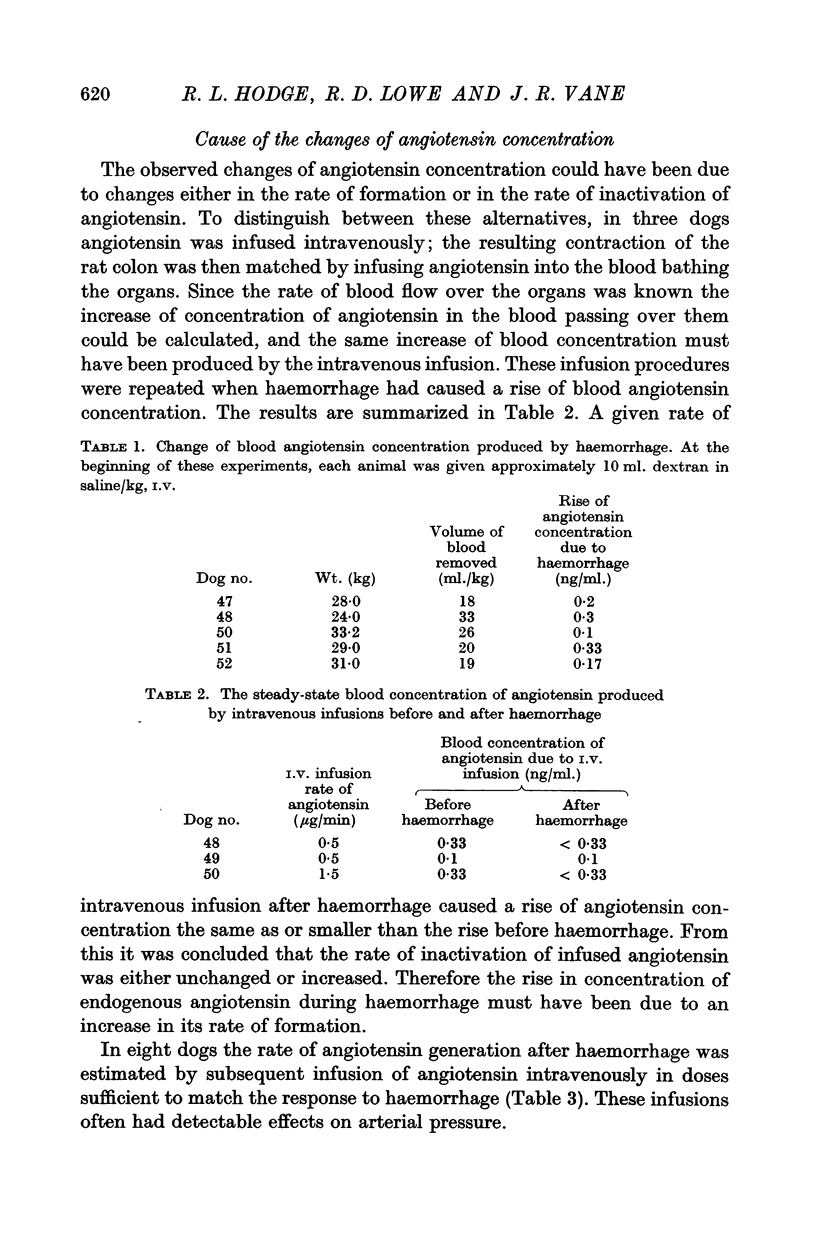
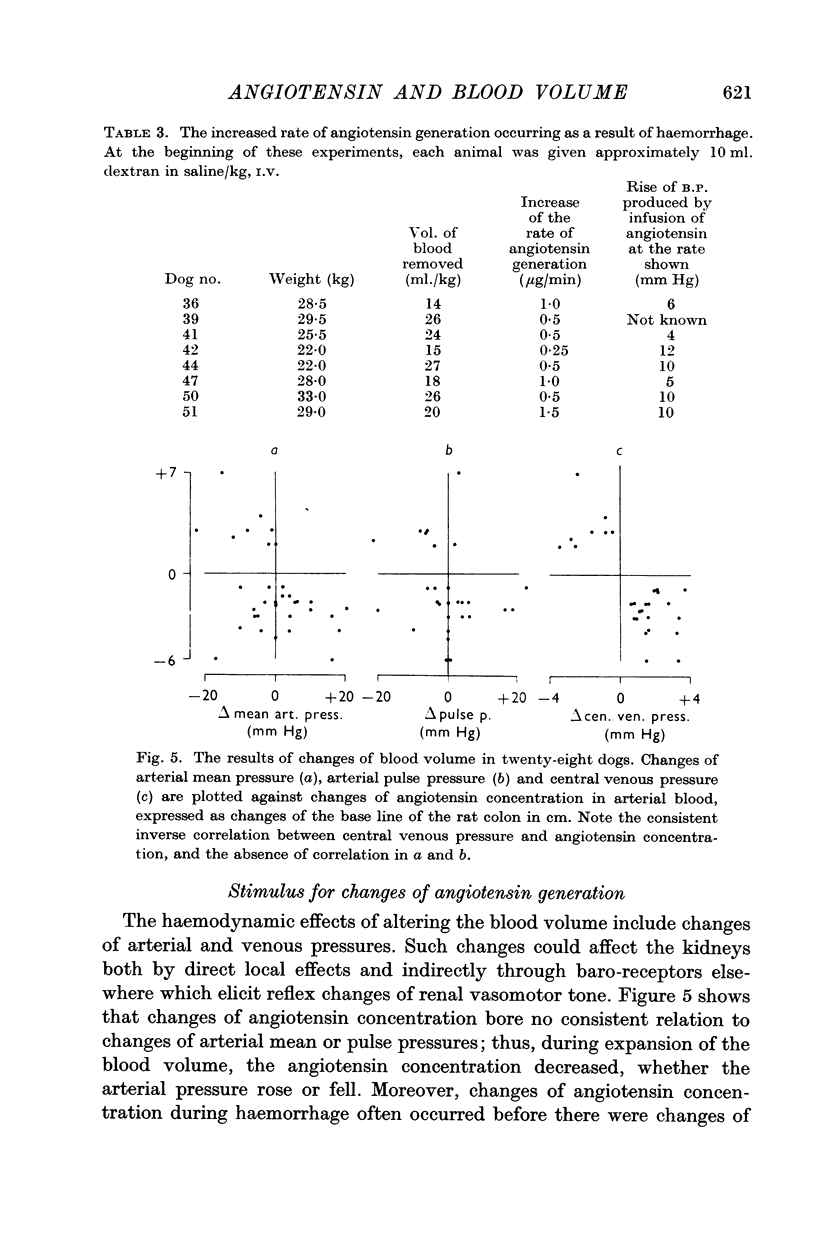
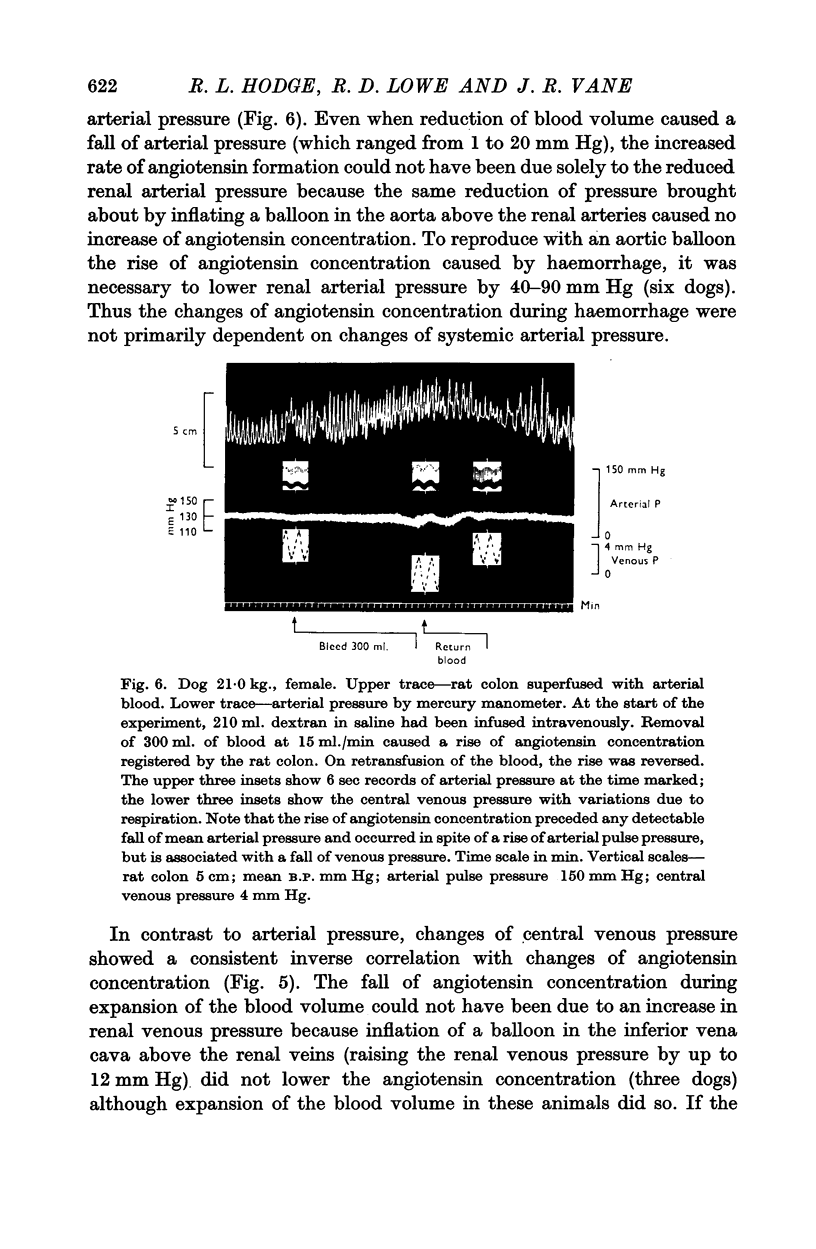
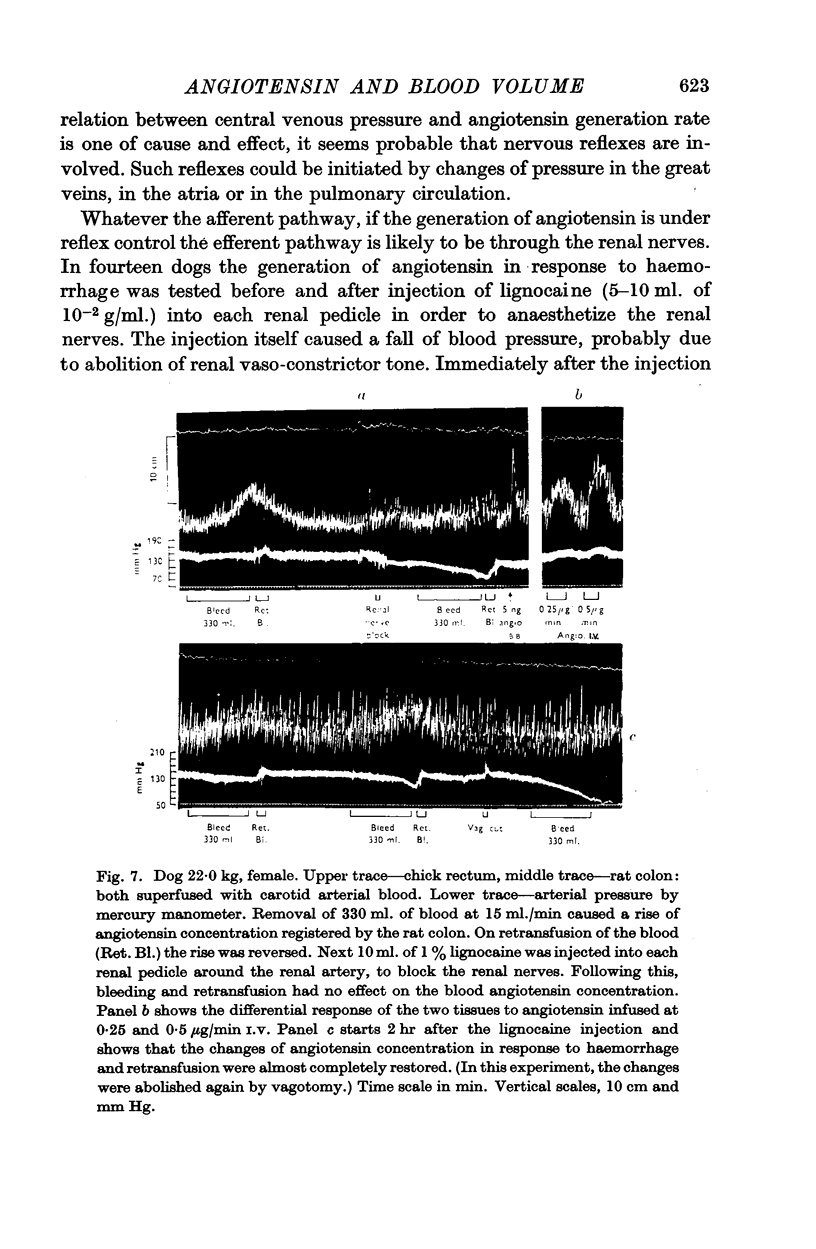

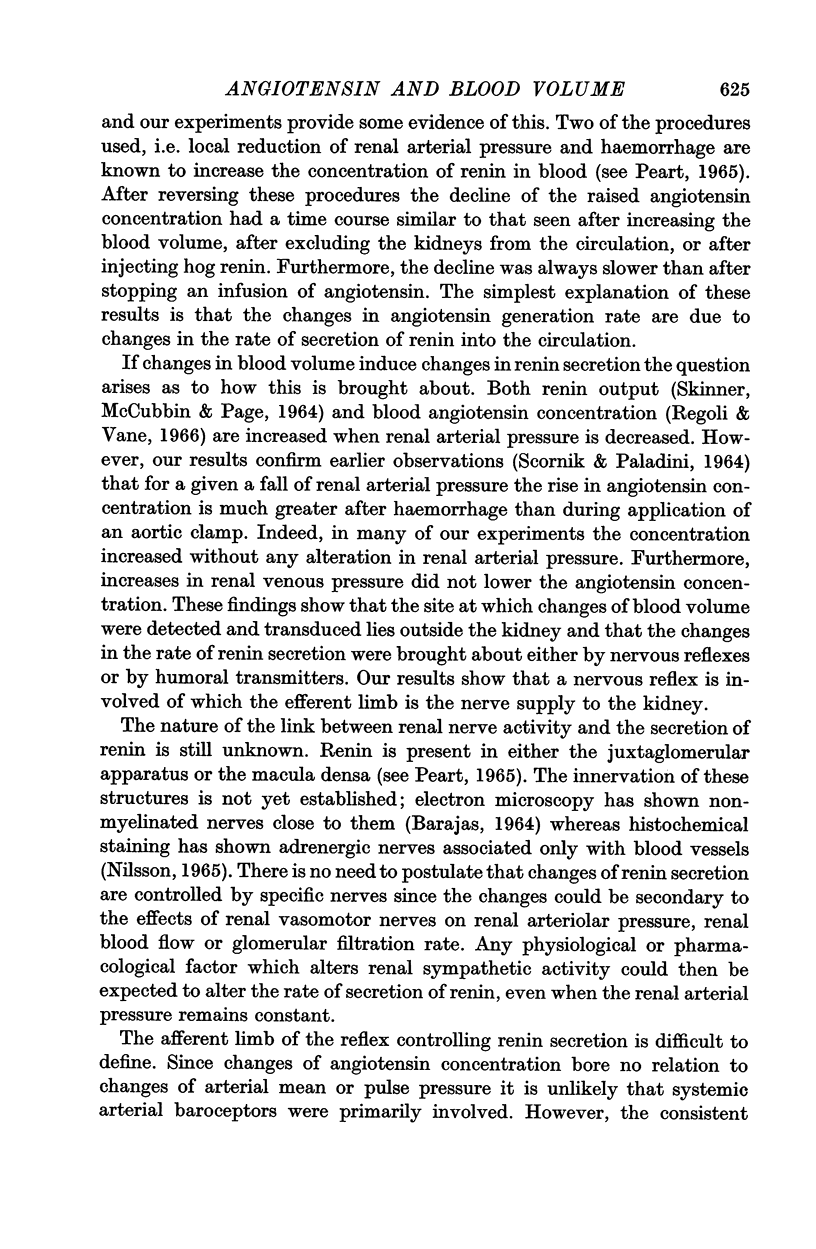
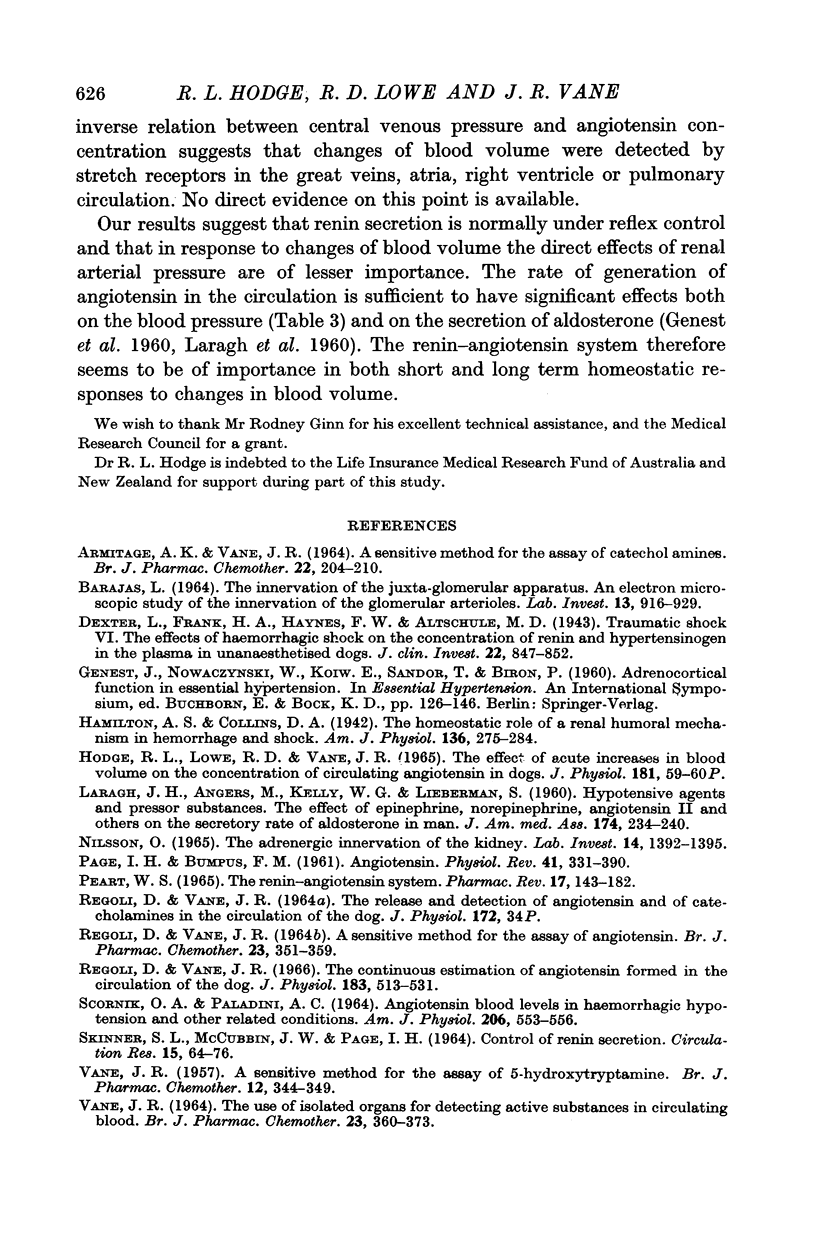
Selected References
These references are in PubMed. This may not be the complete list of references from this article.
- ARMITAGE A. K., VANE J. R. A SENSITIVE METHOD FOR THE ASSAY OF CATECHOL AMINES. Br J Pharmacol Chemother. 1964 Feb;22:204–210. doi: 10.1111/j.1476-5381.1964.tb01560.x. [DOI] [PMC free article] [PubMed] [Google Scholar]
- BARAJAS L. THE INNERVATION OF THE JUXTAGLOMERULAR APPARATUS. AN ELECTRON MICROSCOPIC STUDY OF THE INNERVATION OF THE GLOMERULAR ARTERIOLES. Lab Invest. 1964 Aug;13:916–929. [PubMed] [Google Scholar]
- Dexter L., Frank H. A., Haynes F. W., Altschule M. D. TRAUMATIC SHOCK. VI. THE EFFECT OF HEMORRHAGIC SHOCK ON THE CONCENTRATION OF RENIN AND HYPERTENSINOGEN IN THE PLASMA IN UNANESTHETIZED DOGS. J Clin Invest. 1943 Nov;22(6):847–852. doi: 10.1172/JCI101458. [DOI] [PMC free article] [PubMed] [Google Scholar]
- Janes R. G., Osburn J. O. The analysis of glucose measurements by computer simulation. J Physiol. 1965 Nov;181(1):59–67. doi: 10.1113/jphysiol.1965.sp007745. [DOI] [PMC free article] [PubMed] [Google Scholar]
- LARAGH J. H., ANGERS M., KELLY W. G., LIEBERMAN S. Hypotensive agents and pressor substances. The effect of epinephrine, norepinephrine, angiotensin II, and others on the secretory rate of aldosterone in man. JAMA. 1960 Sep 17;174:234–240. doi: 10.1001/jama.1960.03030030014003. [DOI] [PubMed] [Google Scholar]
- NILSSON O. THE ADRENERGIC INNERVATION OF THE KIDNEY. Lab Invest. 1965 Jul;14:1392–1395. [PubMed] [Google Scholar]
- PAGE I. H., BUMPUS F. M. Angiotensin. Physiol Rev. 1961 Apr;41:331–390. doi: 10.1152/physrev.1961.41.2.331. [DOI] [PubMed] [Google Scholar]
- PEART W. S. THE RENIN-ANGIOTENSIN SYSTEM. Pharmacol Rev. 1965 Jun;17:143–182. [PubMed] [Google Scholar]
- REGOLI D., VANE J. R. A SENSITIVE METHOD FOR THE ASSAY OF ANGIOTENSIN. Br J Pharmacol Chemother. 1964 Oct;23:351–359. doi: 10.1111/j.1476-5381.1964.tb01591.x. [DOI] [PMC free article] [PubMed] [Google Scholar]
- Regoli D., Vane J. R. The continuous estimation of angiotensin formed in the circulation of the dog. J Physiol. 1966 Apr;183(3):513–531. doi: 10.1113/jphysiol.1966.sp007881. [DOI] [PMC free article] [PubMed] [Google Scholar]
- SKINNER S. L., MCCUBBIN J. W., PAGE I. H. CONTROL OF RENIN SECRETION. Circ Res. 1964 Jul;15:64–76. doi: 10.1161/01.res.15.1.64. [DOI] [PubMed] [Google Scholar]
- VANE J. R. A sensitive method for the assay of 5-hydroxytryptamine. Br J Pharmacol Chemother. 1957 Sep;12(3):344–349. doi: 10.1111/j.1476-5381.1957.tb00146.x. [DOI] [PMC free article] [PubMed] [Google Scholar]
- VANE J. R. THE USE OF ISOLATED ORGANS FOR DETECTING ACTIVE SUBSTANCES IN THE CIRCULATING BLOOD. Br J Pharmacol Chemother. 1964 Oct;23:360–373. doi: 10.1111/j.1476-5381.1964.tb01592.x. [DOI] [PMC free article] [PubMed] [Google Scholar]


